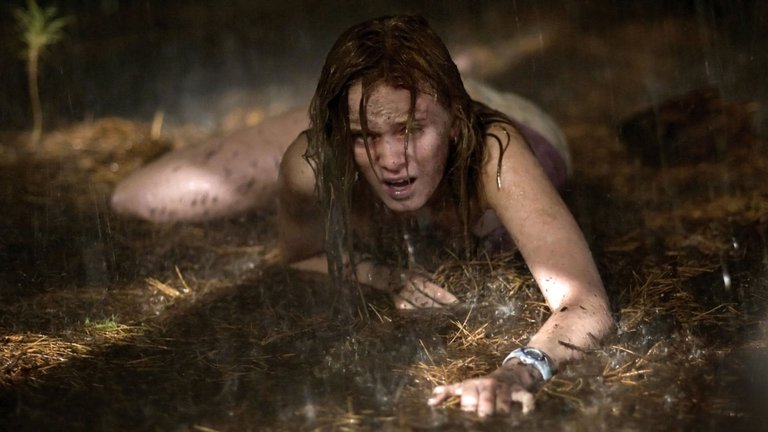Film Review: The Last House on the Left (2009)

Hollywood remakes often turn out worse than the original films. This trend has been especially pronounced in the early 21st century, when studios seemed intent on tarnishing their own legacies by producing soulless and misguided versions of iconic films from the 1970s. However, there were a few exceptions to this. One of the most notable among thise exceptions is The Last House on the Left, a 2009 horror thriller directed by Dennis Iliadis.
When a remake surpasses its original counterpart, it often occurs in situations where the original work is actually not something to write home about. The 1972 version of The Last House on the Left, which marked Wes Craven's directorial debut, achieved commercial success and carved out a place in cinematic history primarily due to its controversial content and its role in spawning the "rape and revenge" subgenre, rather than due to quality filmmaking. Craven himself acknowledged this, admitting that his initial effort was hampered by both inexperience and budget constraints. As an executive producer on the 2009 remake, he aimed to rectify the shortcomings of his earlier work, striving for a more polished and impactful film.
The screenplay for the 2009 version, penned by Adam Alleca and Carl Ellsworth, closely adheres to the plot of the original, itself being inspired by Ingmar Bergman’s period drama The Virgin Spring. The plot follows Mari Collingwood, portrayed by Sara Paxton, a talented swimmer and daughter of Dr. John Collingwood (Tony Goldwyn) and his wife Estelle (Monica Potter). In an attempt to cope with their son’s tragic death, the Collingwoods retreat to their lake house. Mari persuades her parents to allow her to visit a nearby town and hang out with her friend Paige (played by Martha McIsaac). Their innocent outing takes a dark turn when they are lured into a motel room by Justin (played by Spencer Treat Clark), charming teenager who offers them some marijuana. There they are soon confronted by Justin’s father Krug (played by Gareth Dillahunt), a psychopathic criminal who has recently escaped from custody, killing two policemen with the help of his violent associate Francis (played by Aaron Paul) and depraved girlfriend Sadie (played by Riki Lindhome), Krug takes girls to the woods where they are subjected to horrific abuse, including rape, before Paige is fatally stabbed and Mari shot and left for dead. Since their car is wrecked, they seek refuge at the lake house which just happens to be Collingwoods’ home. Collingwoods give them food, shelter and medical assistance before Mari manages to crawl back home, wounded and desperate. Spouses will now have no other choice by to take out their unwelcome guest, motivated not only by survival but also by vengeance.
Dennis Iliadis had a distinct advantage over Craven in crafting this remake; he was equipped with a significantly larger budget and benefited from Craven’s expertise as a producer. This resulted in superior casting, cinematography, and script development—free from the misguided attempts at social commentary and comedic subplot that plagued the original film. However, Iliadis faced challenges from the MPAA Ratings Board, requiring him to tone down some of the violence to secure an R-rating. This compromise diminished some of the visceral impact that characterised Craven's version.
Despite these limitations, The Last House on the Left is well-directed, particularly during its intense final showdown scenes. Iliadis demonstrates ingenuity in crafting these moments, especially during the final revenge sequence where John Collingwood employs his medical skills to dispatch villain in one of cinema's most memorable deaths.
A significant departure from the 1972 version is the fate of certain characters; notably, both Mari and Justin are allowed to survive. This choice likely serves to provide audiences with a semblance of a conventional happy ending—a stark contrast to the brutal nihilism of the original film. While some fans of Craven’s work might view this as an unwarranted softening or "bowdlerising" of the source material, others may find Mari’s survival overly convenient within the context of modern horror genre conventions.
The performances in The Last House on the Left are generally solid. Tony Goldwyn shines as John Collingwood, stepping outside his typical supporting roles to deliver a compelling portrayal of a father pushed to extremes. Monica Potter effectively captures Estelle's emotional turmoil as she grapples with her daughter's trauma. Aaron Paul’s performance as Francis is competent but lacks distinction compared to his later work as Jesse Pinkman in Breaking Bad. Sara Paxton's portrayal of Mari is serviceable; she embodies both vulnerability and resilience throughout her harrowing ordeal. Gareth Dillahunt excels as Krug but struggles to match the dark intensity brought by David Hess in the original film.
Riki Lindhome, a talented comedienne, stands out as Sadie; although her character is somewhat one-dimensional, she brings a memorable presence to her role as a depraved female antagonist. Lindhome's willingness to appear topless, even in some violent scenes, provides an intriguing connection to the exploitative nature of thje original film.
In terms of box office performance, The Last House on the Left achieved solid results but failed to attain cult status akin to its predecessor despite being technically superior. While it is undoubtedly a better film than Craven's original, it remains overshadowed by its controversial predecessor.
RATING: 6/10 (++)
Blog in Croatian https://draxblog.com
Blog in English https://draxreview.wordpress.com/
InLeo blog https://inleo.io/@drax.leo
Hiveonboard: https://hiveonboard.com?ref=drax
Rising Star game: https://www.risingstargame.com?referrer=drax
1Inch: https://1inch.exchange/#/r/0x83823d8CCB74F828148258BB4457642124b1328e
BTC donations: 1EWxiMiP6iiG9rger3NuUSd6HByaxQWafG
ETH donations: 0xB305F144323b99e6f8b1d66f5D7DE78B498C32A7
BCH donations: qpvxw0jax79lhmvlgcldkzpqanf03r9cjv8y6gtmk9